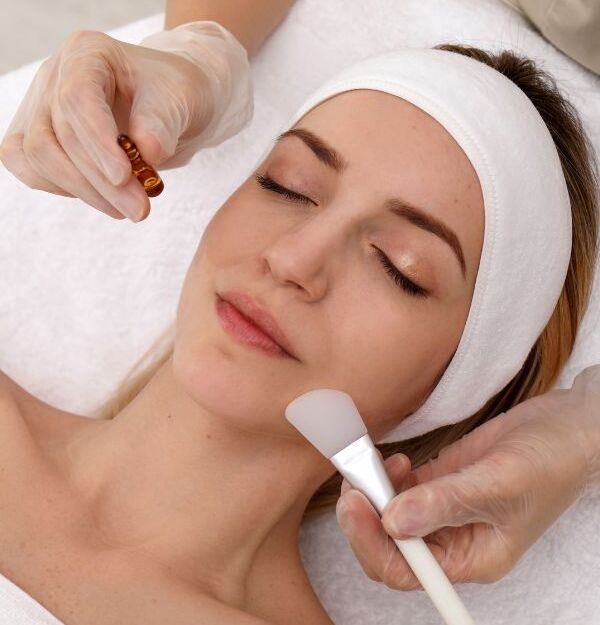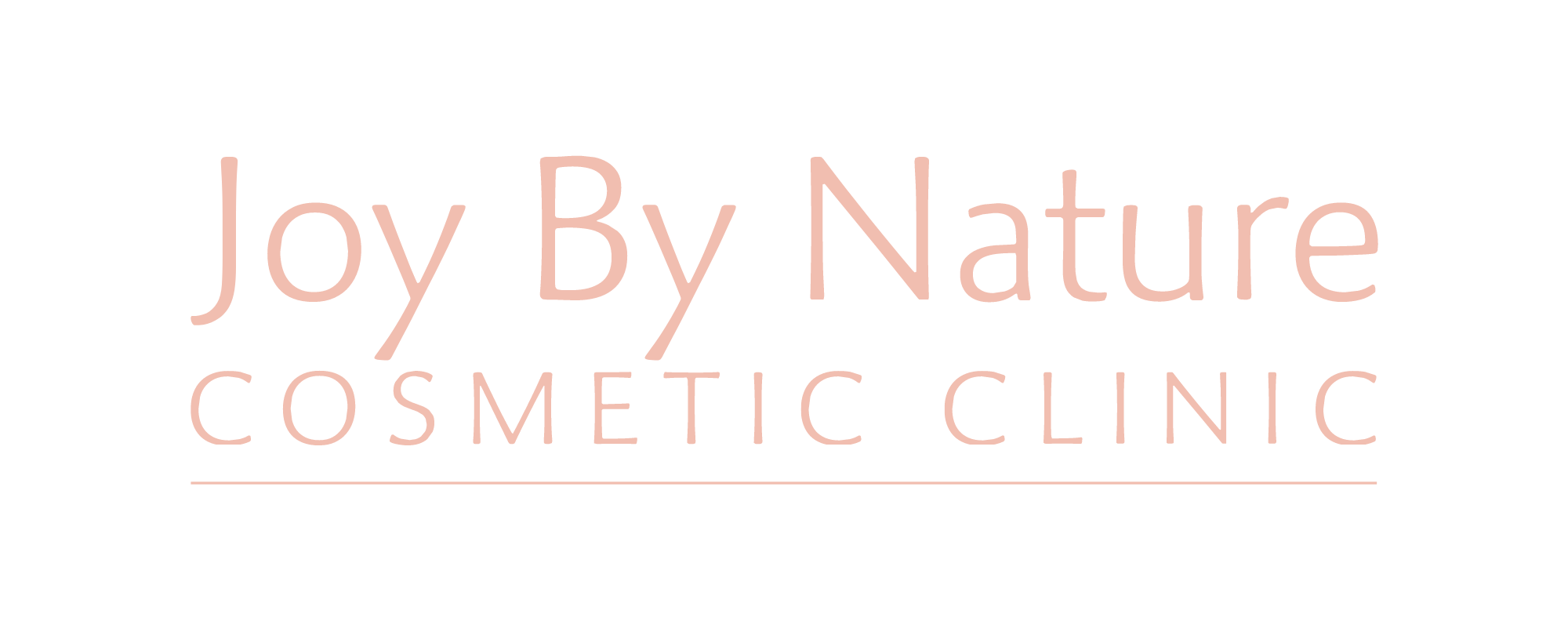A Chemical Peel is a popular cosmetic procedure. It works by applying a specialised solution to the epidermis (the outer layer of the skin), prompting controlled exfoliation and removal of damaged outer layers. This process stimulates collagen production, resulting in improved uneven skin texture, reduced fine lines and wrinkles, acne scarring and sun damage.
Historical Roots
The concept of facial peels dates back millennia, with even Cleopatra incorporating the benefits of naturally occurring alpha hydroxyl acids (AHAs) found in sour milk to enhance the texture of her skin. While ancient civilizations paved the way for skincare practises, today’s advancements in science have revolutionized the effectiveness and comfort of chemical peels.
Modern Marvels
Chemical peels have undergone a remarkable transformation, becoming fast, non-invasive procedures that can be comfortably administered in the sanctuary of our clinic. Gone are the days of prolonged discomfort – Now, you can experience the effects of a chemical peel efficiently and with minimal disruption to your daily routine.
Targeting Diverse Concerns:
One of the key advantages of chemical peels in their versatility. Our skilled skincare professionals tailor these treatments to address a spectrum of skin concerns, ensuring a customised approach for each individual. Whether you’re combating fine lines, wrinkles, uneven skin tone, acne scarring or sun damage, chemical peels are designed to meet your unique skincare needs.
Our professional strength peels come in three grades. Depending on the type of peel used will depend on the concentration and active ingredients.
- Superficial (light) skin peels – using chemicals like alpha hydroxy acids (AHAs), these mild peels act on the epidermis only. Afterwards, skin will feel fresh and maybe slightly flushed for a few hours.
- Medium skin peels – using trichloroacetic acid or glycolic acid, these penetrate more deeply than a superficial peel. With a medium skin peel, skin may flake and peel for a week or so and is typically healed within 2 weeks.
- Deep skin peels – penetrating deep into the layers of the dermis, deep peels use phenol to produce more substantial results. However, recovery takes longer and the treatment does come with potential risks.
Our trained staff will discuss your specific skin concerns and assess what treatment is right for you.
How should you prepare for a chemical peel?
Preparing for a chemical peel is crucial to ensure the best results and minimize potential complications. Here’s a detailed guide on how to prepare for your chemical peel:
Weeks Before Your Chemical Peel
Avoid Exfoliants and Harsh Products:
– Refrain from using exfoliating products, harsh scrubs, or toners at least two weeks before your chemical peel. These products can sensitize your skin and increase the risk of irritation during the peel.
Avoid Shaving or Waxing:
– Refrain from shaving or waxing for at least 24 hours before the chemical peel. This helps to minimize skin sensitivity and reduce the risk of irritation.
Avoid Self-Tanning Products:
– Do not use self-tanning products for at least two weeks before your chemical peel. These products can interfere with the peel process and may lead to uneven results.
Sun Protection:
– Minimize sun exposure as much as possible and use a broad-spectrum sunscreen with a high SPF to protect your skin. Sunburned or tan skin can react differently to chemical peels, leading to complications.
Follow Any Prepping Skincare Routine:
– Some peels may require a specific prepping skincare routine. Your practitioner will provide guidance on this if necessary. Follow their instructions carefully to ensure optimal results.
On the Day of Your Chemical Peel:
Avoid Makeup and Other Products:
– Do not apply makeup or any other products to your skin on the day of the chemical peel. This includes deodorant, hair spray, creams, and lotions. Clean, product-free skin allows for better penetration of the peel solution.
Stay Hydrated:
– Drink plenty of water to stay hydrated. Hydration is essential for overall skin health and can contribute to a smoother recovery process.
Bonus Tip:
Schedule Timing Wisely:
– Avoid scheduling your chemical peel too close to a special event. Give your skin 2 to 3 days, depending on the type of peel, to heal and recover. This minimizes the risk of redness, peeling, or other side effects being visible during your important event.
By following these guidelines, you can enhance the effectiveness of your chemical peel and promote a smoother, more comfortable recovery. Always consult with your skincare professional for personalized advice based on your skin type and the specific type of chemical peel you are undergoing.
What happens during the chemical peel?
Here’s a breakdown of what happens during a typical chemical peel:
1. Preparation:
- Before the chemical peel, your skin will be thoroughly cleansed to remove any makeup, oils, or debris. Your hair and eyes may be protected using a headband or other covering.
2. Application of the Chemical Solution:
- The qualified staff will apply a chemical solution to your skin. The type and strength of the chemical solution used depend on the specific goals of the peel and your skin type. Common chemical peels use acids like alpha hydroxy acids (AHAs), beta hydroxy acids (BHAs), or trichloroacetic acid (TCA).
3. Application Order:
- The application typically starts from the chin, moving towards the nose and cheeks, and then finishing around the eyes and mouth. This order is followed to ensure an even application and to prevent more sensitive areas from being exposed to the solution for an extended period.
4. Sensations During the Peel:
- As the chemical solution begins to work, you may experience sensations like tingling, itching, skin tightness, or a warm or cool sensation. These sensations are normal reactions to the acids in the peel and may vary from person to person.
5. Drying Phase:
- The peel will start to dry on your skin. This is when you might feel the aforementioned sensations more intensely.
6. Duration:
- The entire procedure usually takes under an hour. During this time, one of the trained staff members will be present to monitor your skin’s reaction and ensure your comfort.
7. Post-Peel Sensations:
- After the peel is completed, your skin is likely to feel tight, and this sensation may last for 24-48 hours. Some redness and peeling can occur as well, depending on the depth of the peel.
8. Aftercare:
- Following the procedure, it’s essential to follow any post-peel care instructions provided by the skincare professional. This may include using specific moisturizers, avoiding sun exposure, and refraining from picking at any peeling skin.
It’s crucial to consult with a qualified skincare professional before undergoing a chemical peel to determine the most suitable type and strength of peel for your skin concerns.
What happens after the chemical peel
Below is some important instructions to follow after you have had a chemical peel.
Gentle Handling:
After the chemical peel, it’s crucial to be gentle with your skin. Avoid picking at it or exfoliating, and let the skin shed naturally.
Cleansing:
Cleanse with a PH neutral product and use cool water, including bathing and showering in lukewarm water.
Sun Protection:
Avoid direct sunlight in the days following the treatment due to increased photosensitivity. Apply and reapply SPF 50 regularly and wear protective clothing to prevent sun damage.
Avoiding Aggressive Activities:
Steer clear of excessive exercise or activities that may cause flushed skin, as this can lead to discomfort during the healing process.
Makeup Application:
Refrain from applying makeup for at least 24 hours, possibly longer depending on the type and intensity of the peel.
Skincare Products:
Avoid using aggressive skincare on your skin during the recovery period. No actives like retinal.
Individual Healing Time:
Depending on the intensity of the peel, the healing time may vary. It’s important to be patient and follow the specific post-peel instructions given by the professionals.
While skincare needs can vary from person to person, two fundamental and important skincare tips for maintaining healthy skin are:
- Sun Protection:
– **Use Sunscreen:** Protecting your skin from the harmful effects of ultraviolet (UV) radiation is crucial. UV rays can lead to premature aging, wrinkles, and an increased risk of skin cancer. Use a broad-spectrum sunscreen with at least SPF 30, and apply it generously to all exposed skin, even on cloudy days. Reapply every two hours, or more often if you’re sweating or swimming.
- Consistent Cleansing and Moisturising:
– Cleanse Properly: Regularly cleanse your face to remove dirt, oil, and makeup. Use a gentle, pH-balanced cleanser suitable for your skin type. Avoid harsh cleansers that can strip your skin of natural oils, as this can lead to dryness and irritation.
-Moisturise: Regardless of your skin type, moisturising is essential. It helps maintain your skin’s natural barrier, preventing dryness and promoting a healthy complexion. Choose a moisturizer that suits your skin type—whether it’s oily, dry, or combination—and apply it consistently.
Remember that individual skin types and concerns may require additional steps or specialized products. It’s a good idea to consult with a dermatologist for personalized advice tailored to your specific skincare needs. Additionally, maintaining a healthy lifestyle, staying hydrated, and getting enough sleep also contribute to overall skin health.
References:
Chemical Peel. Mayo Clinic. Accessed 21 January 2024. https://www.mayoclinic.org/tests-procedures/chemical-peel/about/pac-20393473
Chemical Peel. Australian Society of Plastic Surgeons. Accessed 21 January 2024. plasticsurgery.org.au/procedures/non-surgical-procedures/chemical-peel/
Rendon MI, Berson DS, Cohen JL, Roberts WE, Starker I, Wang B. Evidence and considerations in the application of chemical peels in skin disorders and aesthetic resurfacing. J Clin Aesthet Dermatol. 2010;3(7):32-43. https://www.ncbi.nlm.nih.gov/pmc/articles/PMC2921757/


